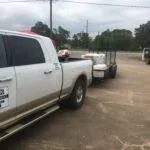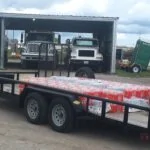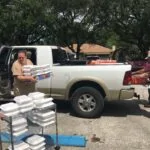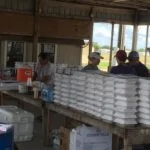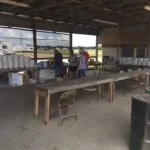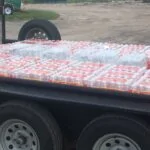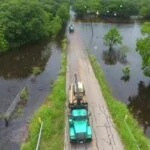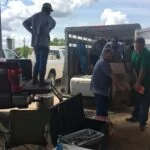Natural Disaster Mitigation
Prefer speaking with a human instead of filling out a form? Call us and we will connect you with a team member who can help.
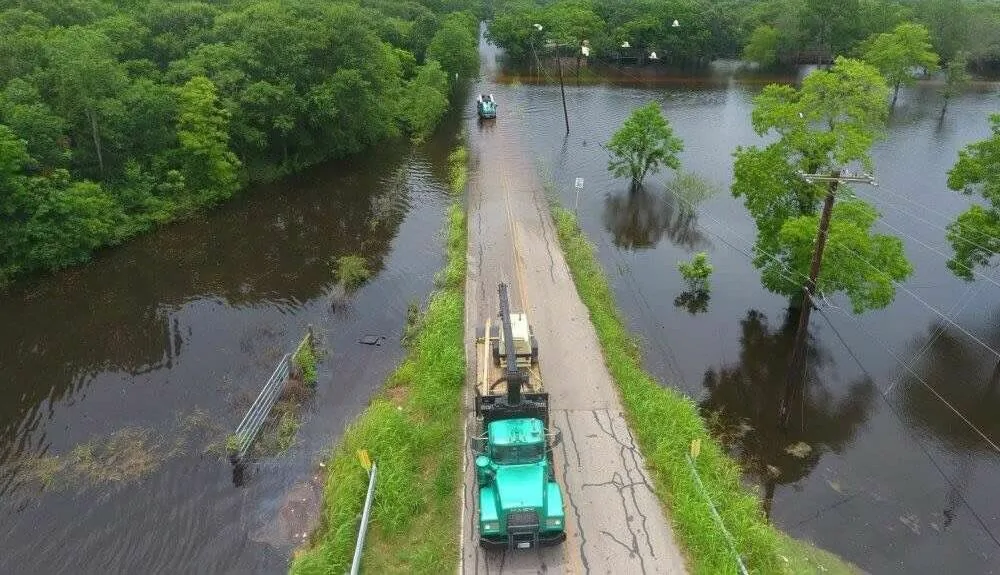
Natural Disaster Mitigation
Our beautiful Gulf Coast is unfortunately susceptible to hurricanes, tropical storms, floods, and the occasional nasty deep freeze. When our communities are faced with natural disasters, Felder Water Well crews are experienced in dealing with every water well issue you can imagine and then some. It’s all hands on deck, 7 days a week during these trying times.
In February 2021 when the deadly “Polar Vortex” froze over the state of Texas, our crews were out there working nonstop to get our customer’s wells back up and running. Our store, Angleton Pumps, Parts & Supplies was open after hours and weekends for our customers. When our vendors weren’t able to deliver, we had drivers making daily runs to pick up pumps, parts, fittings, and pipe trying to keep our shelves stocked for our customers.
In August 2017 when Hurricane Harvey struck, our crews stepped up to do what it took to service our customers and help our communities. We coordinated with members of the Texas Ground Water Association from all over the state who brought in donations to the Gulf Coast including generators, bottled water, and food. We had crews grilling burgers, boxing up meals, and delivering them to first responders, community shelters, and Churches.
We strive to do our best and take care of our customers and communities the same way we would take care of our families.
Hurricanes, tropical storms and flooding can damage your water well. If your well has been damaged by a storm or submerged by flood waters, the system should be thoroughly inspected by a licensed water well contractor to determine if any repairs or decontamination is needed. Do not restore power to a previously submerged system to avoid potential electrical shock or damage to your well pump.
If your well has been submerged, it is best to assume that the well is contaminated. All four inch and larger wells are vented to the atmosphere. When flood waters rise over the well, water enters through vents and electrical fittings. This contaminates the inner walls of the well, the pump’s electrical cable and discharge pipe. Any contaminants found in floodwater can make their way into your well. This may include manure, agricultural fertilizers, insects, grass and sewage from flooded septic systems as well as all other contaminants that the water has come in contact with.
The proper way to disinfect the system is to remove the pump and equipment, jet the well free of flood debris, and chlorinate the entire system with high strength chlorine. All wells that have pumps removed must be chlorinated according to state regulations and guidelines. Once the pump has been reinstalled and the water is turned on, the entire well and home water piping system should sit with chlorine in lines for 24 hours. The water is them turned on and allowed flow until system is free of chlorine. The next step is to have the water tested by a certified laboratory. Until you have test your test results and you are satisfied that your well is not contaminated, you should not use water from a flooded well for drinking, cooking, showering or even brushing your teeth.
Well water comes out of the ground at an average of 68-72°. Water steadily moving at a temperature of 68-72° will not freeze.
We suggest that the afternoon before a freeze, turn on all exterior water outlets to a steady drizzle. Turn on all interior faucets to a steady drip of both hot and cold water. Open bathroom and kitchen cabinets with pipes and the dishwasher to allow heat inside.
Submersible Pump
Your pump is actually deep down inside your well, however, all the casing and piping above the ground and the tank that are exposed should be insulated and covered. You can purchase insulation or use towels or old sweat shirts to double wrap and tape pipes. Use insulation, large sleeping bags, quilts or comparable material and secure around the tank. If your well and tank are in a pump house, you can securely install a 100 watt light to the house to keep it warm.
Jet Pump
Cover the pump with a trash can, secure insulation on the outside of the trash can, then put a larger trash can over that. Insulate and cover all exposed piping and the tank. You can purchase insulation or use towels or old sweat shirts to double wrap and tape pipes. Use insulation, large sleeping bags, quilts or comparable material and secure around the tank. Never put insulation, blankets etc. directly on your jet pump as it could be a fire hazard. If your well and tank are in a pump house, you can securely install a 100 watt light to the house to keep it warm.
If you are dealing with a frozen well already or your water stops flowing or you lose power for any reason, TURN OFF THE POWER TO THE PUMP IMMEDIATELY to prevent catastrophic failure, i.e. overheating and melting the casing which will destroy your water well.

